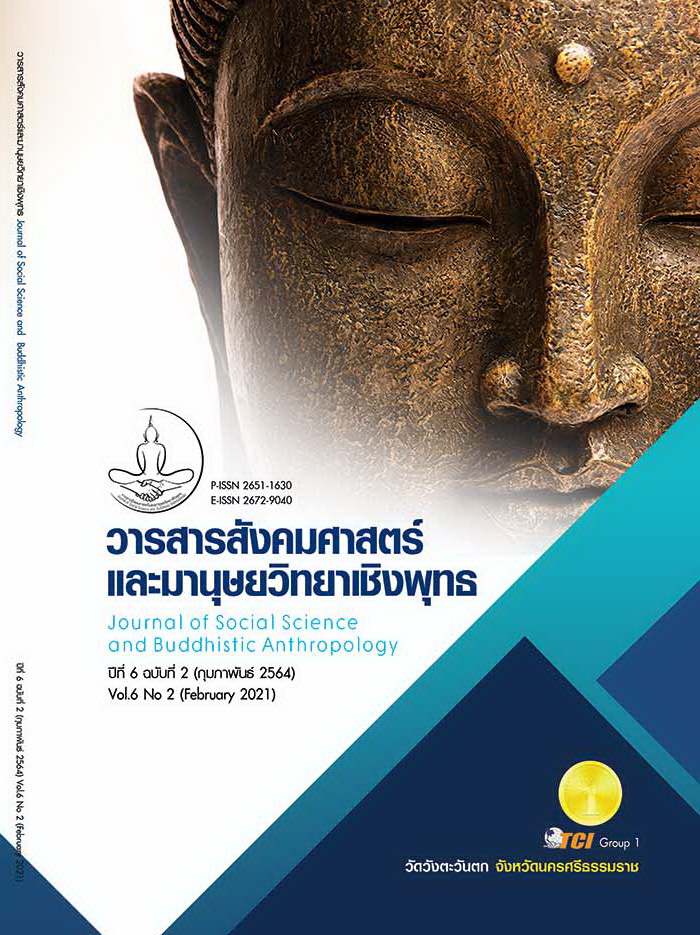FACTORS OF INFORMATION BEHAVIORS OF PERSONNEL IN THE SECOND ARMY AREA
Keywords:
Factors, Information Behaviors, The Second Army Area PersonnelAbstract
This article aims to study the levels of information behaviors; the effect of information needs, information seeking and searching, use of information, and environmental context influencing on information behaviors; and guidelines for promoting of information behaviors of the personnel of the Second Army Area. This research employed a mixed research methodology combining quantitative and qualitative methods. . In the quantitative research part, the sample size was determined based on the criterion of 20 times the observed variables. They were selected via multi-stage sampling. Data was collected from 320 of the 21st – 210th Military Circles personnel by questionnaire and analyzed with a structural equation model. As for the qualitative research component, in-depth interviews were conducted with 17 key informants from high-ranking commanding officers of Royal Thai Army; the 2nd Army Area ; and the Military Circle in the Second Army Area. They were selected by purposive sampling. The data were then analyzed with content analysis. The findings showed that: 1) information behaviors of the Second Army Area personnel was high level; 2) the environmental context had the greatest overall influence on information behaviors of the Second Army Area personnel, followed by information seeking and searching, information needs, and use of information, respectively; and 3) the guidelines for promoting of information behaviors of the Second Army Area personnel were 3.1) development of knowledge in terms of techniques and methods, and laws; 3.2) assignment of clear duties and tasks to personnel; 3.3) provision of sufficient budget and tools for the use of information system; 3.4) installation of a high-speed Internet and Wi-Fi network; 3.5) cooperation between the army and the private sector in the development of information system programs; 3.6) establishment of communication channels for personnel in the unit; and 3.7) rotation of personnel which enabled each officer to learn information system of the unit.
References
กระทรวงเทคโนโลยีสารสนเทศและการสื่อสาร.(2559).แผนพัฒนาดิจิทัลเพื่อเศรษฐกิจและสังคม. กรุงเทพมหานคร: กระทรวงเทคโนโลยีสารสนเทศและการสื่อสาร.
แกมกาญจน์ สมประเสริฐศรี. (2561). ปัจจัยที่ส่งผลต่อพฤติกรรมการค้นหาสารสนเทศของนิสิตระดับปริญญาตรี คณะวิทยาการสารสนเทศ มหาวิทยาลัยมหาสารคาม. อินฟอร์เมชั่น, 25(1), 8-16.
จันทิมา เขียวแก้ว. (2557). บทที่ 8 ความต้องการสารสนเทศและการใช้สารสนเทศ CA305 การจัดการสารสนเทศเพื่องานนิเทศศาสตร์. เรียกใช้เมื่อ 20 กันยายน 2560 จาก webstaff.kmutt.ac.th/~ werapon.chi/CA301/CA305_1_2014/chapter08.pdf
ธนู บุญญานุวัตร. (2557). ความสำคัญของสารสนเทศ. เรียกใช้เมื่อ 11 กันยายน 2563 จาก http://tanoo.wordpress.com
น้ำทิพย์ วิภาวิน. (2546). ทักษะการใช้ห้องสมุดยุคใหม่. กรุงเทพมหานคร: เอสอาร์ พริ้นติ้ง.
มหาวิทยาลัยราชภัฏเทพสตรี สาขาวิชาสารสนเทศศาสตร์. (2561). การรู้สารสนแทศ. เรียกใช้เมื่อ 24 พฤษภาคม 2561 จาก http://human.tru.ac. th/elearning/tec_ban /tinfo01/info06.html
ราชกิจจานุเบกษา. (2558). พระราชกฤษฎีกาแบ่งส่วนราชการและกำหนดหน้าที่ของส่วนราชการกองทัพบก กองทัพไทย กระทรวง กลาโหม พ.ศ. 2558 (ฉบับที่ 2) เล่มที่ 132 ตอนที่ 86ก หน้า 100-103 (2558, กันยายน 8).
วชิร ยั่งยืนและคณะ. (2559). ตัวแบบพฤติกรรมสารสนเทศ: มุมมองสำหรับสภาพแวดล้อมยุคดิจิทัล. Journal of Information Science and Technology, 6 (1), 34-44.
ศิริพร พูลสุวรรณ. (2561). รายงานการวิจัยเรื่อง พฤติกรรมการเสพสื่อในยุคดิจิทัลของกำลังพล สังกัดกองทัพภาคที่ 2. กรุงเทพมหานคร: มหาวิทยาลัยราชภัฏสวนสุนันทา.
สหไทย ไชยพันธุ์. (2556). การศึกษากับการใช้ทรัพยากรสารสนเทศประเภทสิ่งตีพิมพ์. Princess of Narathiwas University Journal, 5(2), 147-156.
สำนักงานพัฒนาระบบราชการ. (2559). แผนปฏิบัติราชการประจำปีงบประมาณ 2559 ของกองทัพภาคที่ 2. นครราชสีมา: สำนักงานพัฒนาระบบราชการ กองทัพภาคที่ 2.
สำนักนายกรัฐมนตรี. (2560). แผนพัฒนาเศรษฐกิจและสังคมแห่งชาติฉบับที่สิบสอง พ.ศ. 2560-2564. เรียกใช้เมื่อ 2 กุมภาพันธ์ 2561 จาก http://www.nesdb.go.th/ ewt_dl_link.php?nid=642
อัญชสา สีนวนแก้ว และชลภัสส์ วงษ์ประเสริฐ. (2558). ปัจจัยเอื้อต่อพฤติกรรมสารสนเทศที่ส่งผลต่อการสร้างมูลค่าด้านการผลิตและการตลาดของเกษตรกรไทย. วารสารสำนักหอสมุด มหาวิทยาลัยทักษิณ, 4 (1), 96-116.
อารีย์ ชื่นวัฒนา. (2555). ผู้ใช้บริการสารสนเทศ ใน ประมวลสาระชุดวิชาผู้ใช้และการบริการสารสนเทศ หน่วยที่ 5. นนทบุรี: มหาวิทยาลัยสุโขทัยธรรมาธิราช.
Bandura, A. (2001). Social cognitive theory of mass communication. Media Psychology, 3(3), 266-299.
Chen, C. C. & Hernon, P. (1982). Information seeking : Assessing and anticipating user needs. New York: Neal-Schuman.
Das, K. C. & Achary, J. (2014). Information needs, Information seeking behaviour and use of electronic resources by research scholars and faculties in the university and research libraries of Odisha. Journal of Library & Information Science, 4 (4), 552-566.
Leckie, G. J. et al. (1996). Modelling the information seeking of professionals: A general model derived from research on Engineers, Health care professionals, and Lawyers. Library Quarterly, 66(2), 161-193.
Paisley, W. J. (1968). Information needs and users. Annual review of information science and technology, 3 (1), 1-30.
Pao, M. L. (1989). Concepts of information retrieval. Englewood: Libraries Unlimited.
Spink, A. & Cole, C. (2006). Human information behavior: Integrating diverse approaches and information use. Journal of the American Society for Information Science and Technology, 57 (1), 25-35.
UNESCO. (1978). Indicators of environmental quality and quality of life. Paris: UNESCO.
Wilson, T. D. (1981). On user studies and information needs. Journal of Documentation, 37 (1), 3-15.
Wilson, T. D. (2000). Human information behavior. Information Science, 3(2), 49-55.








